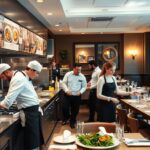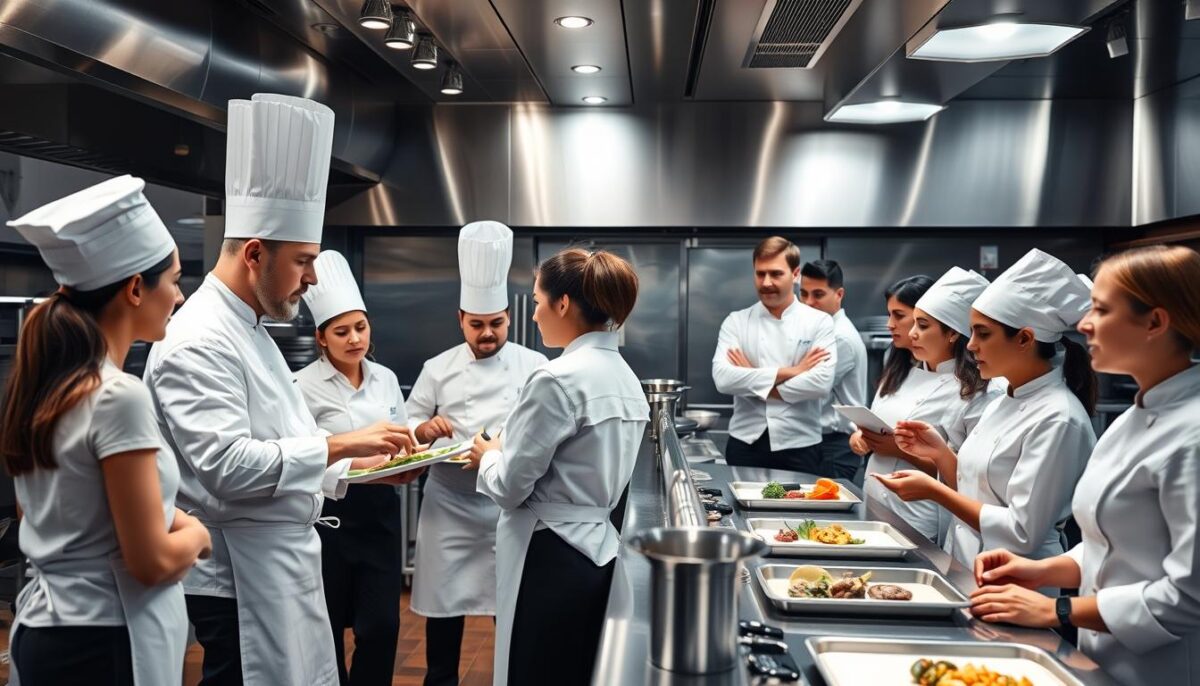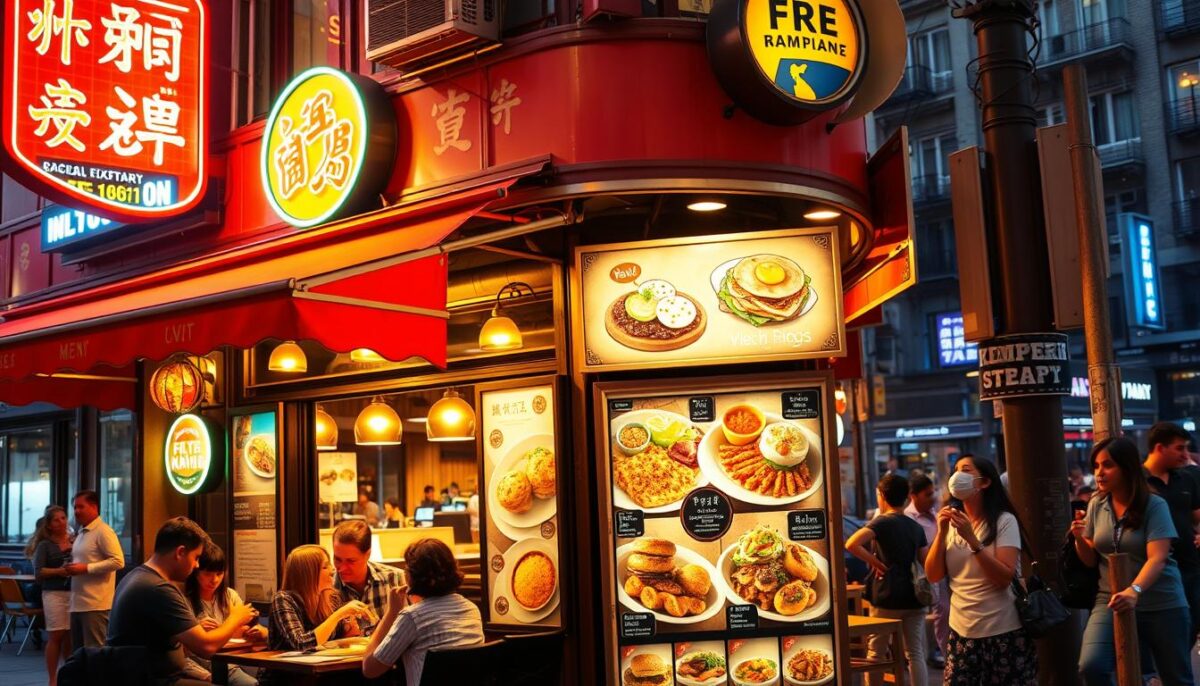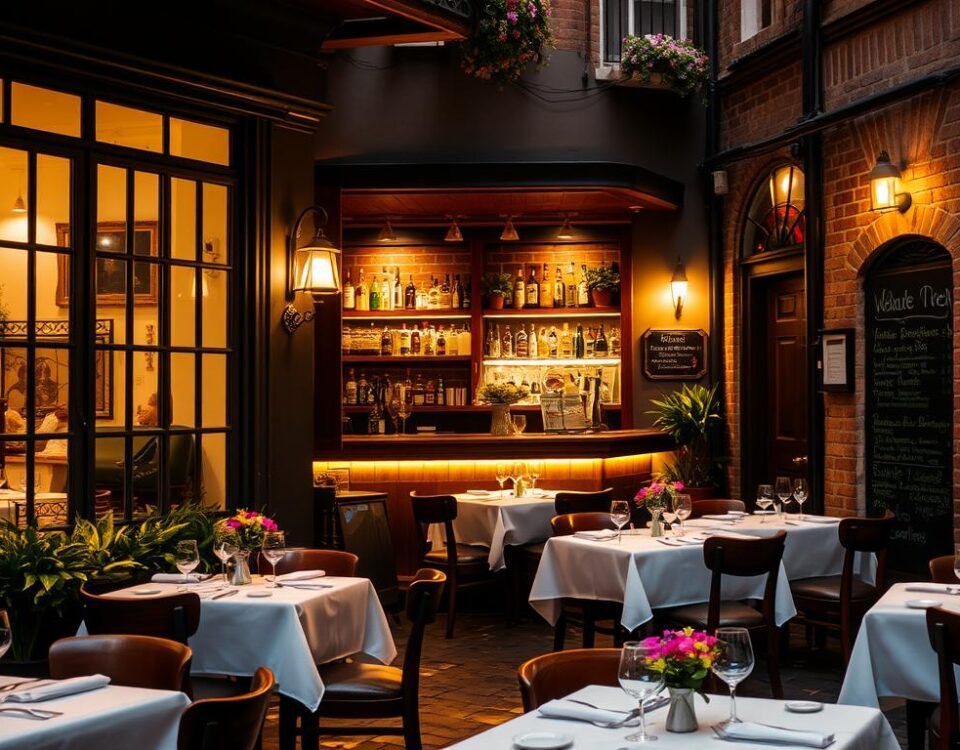
Opening a Restaurant? Don’t Miss These 10 Crucial Steps
July 13, 2025
20 Proven Ways to Increase Restaurant Sales Fast
July 14, 2025Opening a restaurant is a dream for many, but the harsh reality is that a significant number of new establishments fail within the first year. I recall a friend who invested his life savings into a quaint Italian eatery, only to watch it close down after a few months due to poor location selection and inadequate financial planning. Surprisingly, statistics show that nearly 60% of restaurants fail within the first three years of operation, often due to avoidable common mistakes.
Understanding these pitfalls can significantly increase the chances of success in the competitive food industry. In this article, I will cover the four most critical areas where new restaurant owners go wrong: location selection, financial management, menu planning, and staff management. By being aware of these challenges, you can better navigate the complexities of running a restaurant business.
Key Takeaways
- Understanding common mistakes can increase the chances of success in the restaurant industry.
- Location selection is a critical factor in determining the success of a restaurant.
- Effective financial management is crucial for the sustainability of a restaurant business.
- Menu planning plays a significant role in attracting and retaining customers.
- Staff management is essential for providing excellent customer service and ensuring operational efficiency.
The Reality of Restaurant Business Failures
Despite the best intentions, many restaurants fail to make it past their first year due to various operational and financial challenges. New restaurant managers and owners are often very eager to please their customers and solidify their reputations as providing the highest quality food and best service.
Why 30% of Restaurants Fail in Their First Year
One of the primary reasons for this high failure rate is the underestimation of the unique challenges specific to the restaurant industry. Fluctuations in food costs can significantly impact profitability, making it crucial to monitor these costs closely. Additionally, regulatory challenges such as health codes and licensing requirements can be daunting for new owners.
Understanding the Challenges in the Food Industry
The food industry is complex, with operational intricacies in food preparation, storage, and service that can make or break a business. While these challenges are significant, they can be managed with proper planning, education, and systems. By understanding these challenges, new restaurant owners can better prepare themselves for the realities of running a successful restaurant industry business.
Choosing a Poor Location for Your Restaurant
One of the most critical decisions you’ll make when starting a restaurant is choosing its location. A poor location can lead to a significant decline in customers and ultimately affect the viability of your restaurant in the area.
Visibility and Accessibility Factors
A location with high visibility and easy accessibility is crucial. “A restaurant that is hard to find or access will struggle to attract and retain customers,” as noted by industry experts. Ensuring that your restaurant is situated in a visible and accessible spot can significantly enhance customer footfall.
Demographic and Competition Analysis
Understanding the demographics of the area and analyzing the competition are vital steps. It’s essential to know the age, income levels, and preferences of the local population to tailor your offerings accordingly. Moreover, assessing the competition helps in identifying gaps in the market that your restaurant can fill.
Parking and Infrastructure Considerations
If your pizzeria or quick-service restaurant doesn’t have abundant, accessible parking for customers, you might lose business. Adequate parking, along with other infrastructure considerations such as utilities and kitchen ventilation capabilities, plays a significant role in the success of your restaurant. As the data suggests, limited parking can deter potential customers.
Considering these factors can help you make an informed decision when choosing a location for your restaurant. Ensuring that your chosen location meets these criteria can significantly improve your chances of success in the competitive food industry.
Financial Mismanagement and Unrealistic Expectations
Unrealistic expectations and financial mismanagement can quickly derail a restaurant’s chances of success. Many new restaurant owners underestimate the financial challenges they may face, leading to poor decision-making.
Expecting Immediate Profits
One common mistake is expecting immediate profits. Restaurants often take time to build a loyal customer base, and it’s crucial to have sufficient capital to sustain the business during the initial period. I recommend having a solid business plan that accounts for the possibility of slow growth.
Inadequate Starting Capital
Inadequate starting capital is another significant issue. Underestimating the initial investment required can lead to financial strain. It’s essential to accurately estimate costs and expenses to avoid this pitfall.
Poor Budget Planning and Cost Control
Effective management involves creating a detailed budget and controlling costs. This includes monitoring food costs, labor expenses, and utility bills. Regular financial reviews help in making necessary adjustments to maintain profitability.
| Expense Category | Estimated Cost | Actual Cost |
|---|---|---|
| Food Costs | $10,000 | $9,500 |
| Labor Expenses | $8,000 | $8,200 |
| Utility Bills | $1,500 | $1,600 |

Common Starting a Restaurant Mistakes in Menu Planning
A well-crafted menu is essential for any restaurant’s success, yet many owners make avoidable mistakes when planning their menu. Effective menu planning requires a deep understanding of your target market, culinary creativity, and financial acumen.
Offering Too Many Menu Items
One common mistake is offering too many menu items, which can lead to kitchen inefficiencies and confuse customers. A streamlined menu allows for better inventory management and a more focused culinary approach. Limiting menu options can also enhance the dining experience by making it easier for customers to decide.
Menu Design and Pricing Errors
Menu design and pricing are critical elements that can make or break a restaurant. Poorly designed menus with unclear pricing can deter customers. It’s essential to balance attractive menu design with competitive pricing to attract and retain customers.
Not Adapting to Market Preferences
Failing to adapt to market preferences is a significant menu planning mistake. As the data suggests, “Sometimes, what you personally like is not relevant as you are not a paying customer.” Conducting market research to understand local tastes, dietary trends, and price sensitivity is crucial. Restaurant owners must be willing to adjust their menu offerings based on customer feedback and sales data to remain competitive.
According to a renowned restaurateur,
“A menu should be a reflection of your customers’ tastes, not just your own.”
This emphasizes the need for flexibility and a customer-centric approach in menu planning.
Neglecting Staff Training and Management
A well-managed restaurant is characterized by its well-trained staff and positive work environment. This combination not only enhances customer experience but also boosts staff morale and productivity. As a restaurant owner, it’s essential to recognize the value of investing in your staff’s growth and creating an environment where they feel valued and motivated.

Importance of Comprehensive Training Programs
Comprehensive training programs are vital for equipping staff with the skills needed to provide exceptional service. This includes training on customer service, menu knowledge, and operational efficiency. By investing in thorough training, restaurant management can significantly improve staff performance and overall customer satisfaction.
Creating a Positive Work Environment
Creating a positive work environment is equally crucial for staff retention and productivity. This involves fostering a culture of respect, recognition, and fair compensation. When staff feel valued and supported, they are more likely to be engaged and committed to delivering high-quality service, ultimately benefiting the restaurant’s success.
Ineffective Marketing Strategies
Ineffective marketing strategies can be a significant obstacle for restaurants aiming to establish a strong presence in the market. A well-crafted marketing plan is essential for attracting and retaining customers in the competitive food industry.
Lack of Online Presence and Digital Marketing
A significant marketing mistake restaurants make is not having a robust online presence. This includes having an engaging website and being active on social media platforms. Digital marketing is crucial for reaching a wider audience and building a brand identity. Without it, restaurants risk being overshadowed by competitors who have a stronger online presence.

Failing to Build a Strong Brand Identity
Failing to build a strong brand identity is another marketing mistake that can make it difficult for restaurants to stand out. A strong brand identity encompasses various elements, including visual identity, voice, values, and the overall customer experience. Consistent branding across all touchpoints creates a cohesive and memorable impression. Effective branding should communicate the restaurant’s unique value proposition and resonate with the target audience.
To develop a strong brand identity, restaurants should focus on creating a consistent visual identity, tone of voice, and customer experience. This can be achieved by ensuring that all marketing materials, from menus to social media posts, reflect the restaurant’s brand values and concept.
Poor Inventory and Operations Management
One of the key challenges restaurant owners face is managing inventory and operations efficiently. Effective management of these aspects is crucial for the success of a restaurant. By optimizing inventory levels and streamlining operations, restaurants can significantly reduce waste and improve their bottom line.
Inventory Control and Food Waste Issues
Effective inventory management is key to reducing a restaurant’s operating costs. By knowing inventory levels accurately, as well as backorders, it is possible to limit waste and optimize purchasing costs. This helps in minimizing food waste, which is a significant issue in the food industry.
- Implementing a robust inventory management system to track inventory levels.
- Conducting regular audits to identify areas of waste.
- Optimizing menu planning to reduce waste.
Operational Inefficiencies
Operational inefficiencies can create bottlenecks that impact service speed, food quality, and staff satisfaction. Common sources of these inefficiencies include poor kitchen layout, inadequate equipment, and ineffective communication systems. To address these issues, restaurants can implement process mapping and standard operating procedures to identify and eliminate inefficiencies.
By streamlining operations and improving efficiency, restaurants can enhance the customer experience and improve their overall performance.
| Operational Area | Inefficiency | Solution |
|---|---|---|
| Kitchen Layout | Poor workflow | Redesign kitchen for better workflow |
| Equipment | Inadequate or outdated | Upgrade or replace equipment |
| Communication | Ineffective systems | Implement efficient communication systems |
Ignoring Customer Experience and Feedback
Ignoring customer experience and feedback can be a recipe for disaster in the competitive restaurant industry. Providing a great customer experience is crucial for building a loyal customer base and driving repeat business.
The Impact of Service Quality on Success
The quality of service in a restaurant significantly impacts its success. Excellent service not only enhances the dining experience but also encourages customers to leave positive reviews and recommend the restaurant to others. According to a study, a significant percentage of customers are likely to return to a restaurant that provides good service. As noted by a hospitality expert, “Service is not just about serving food; it’s about creating an experience that customers will remember.”
“The goal is to turn customers into loyal advocates by providing an exceptional dining experience.”
Using Customer Feedback for Improvement
Customer feedback is invaluable for identifying areas of improvement in a restaurant. By actively soliciting and analyzing feedback, restaurant owners can make informed decisions to enhance the customer experience. Methods for gathering feedback include comment cards, online reviews, social media monitoring, and direct conversations with customers. A systematic approach to gathering and utilizing customer feedback can lead to continuous improvement.
| Feedback Method | Advantages | Disadvantages |
|---|---|---|
| Comment Cards | Immediate feedback, easy to implement | Limited detail, potential bias |
| Online Reviews | Detailed feedback, wide reach | Negative reviews can be damaging |
| Social Media Monitoring | Real-time feedback, broad coverage | Requires constant monitoring |
By understanding and acting on customer feedback, restaurants can improve their service quality and overall customer experience.
Conclusion: Setting Your Restaurant Up for Success
With the knowledge of common starting a restaurant mistakes, you’re better equipped to navigate the industry. Throughout this article, we’ve explored the critical errors that can lead to restaurant business failure, from poor location choices to neglecting customer experience.
By understanding these pitfalls, you can create a comprehensive business plan that sets your restaurant up for success. Proper planning, combined with passion and attention to detail, is key to avoiding common mistakes and achieving success in the restaurant business.
Remember, the path to a thriving restaurant is paved with careful planning and a willingness to adapt. By avoiding common mistakes and staying focused on your goals, you can build a loyal customer base and enjoy the rewards of restaurant ownership.
FAQ
What are the most common reasons for restaurant business failures?
In my experience, the most common reasons include poor location, financial mismanagement, and ineffective marketing strategies. Understanding these challenges can help you prepare a solid business plan.
How can I ensure my restaurant’s location is suitable for success?
To choose a good location, consider factors like visibility, accessibility, and demographics. Research the area to understand the local competition and customer base. I always recommend visiting potential locations at different times to gauge foot traffic.
What are some key elements of a well-planned menu?
A well-planned menu should balance variety with simplicity, avoiding too many dishes that can complicate inventory management and food preparation. Pricing should be competitive, and menu design should be appealing and easy to navigate. I find that regularly reviewing customer feedback helps refine menu offerings.
How important is staff training in the restaurant industry?
Comprehensive staff training is crucial for delivering high-quality customer service and ensuring operational efficiency. It helps in creating a positive work environment, reducing staff turnover, and improving overall performance. I believe in investing time and resources into ongoing training programs.
What role does online presence play in restaurant marketing?
Having a strong online presence is vital in today’s digital age. It includes maintaining an updated website, engaging on social media, and managing online reviews. These efforts help build a brand identity and attract customers. I use digital marketing tools to monitor our online presence and adjust our strategies accordingly.
How can I manage my restaurant’s inventory effectively?
Effective inventory management involves regularly monitoring stock levels, reducing food waste, and optimizing supply chain logistics. Implementing a robust inventory system can help streamline these processes. I review inventory reports regularly to identify areas for improvement.
Why is customer feedback important for my restaurant?
Customer feedback is invaluable for understanding customer satisfaction levels and identifying areas for improvement. It can inform menu changes, service quality enhancements, and overall customer experience improvements. I actively solicit and respond to customer feedback to show that I value their opinions.



